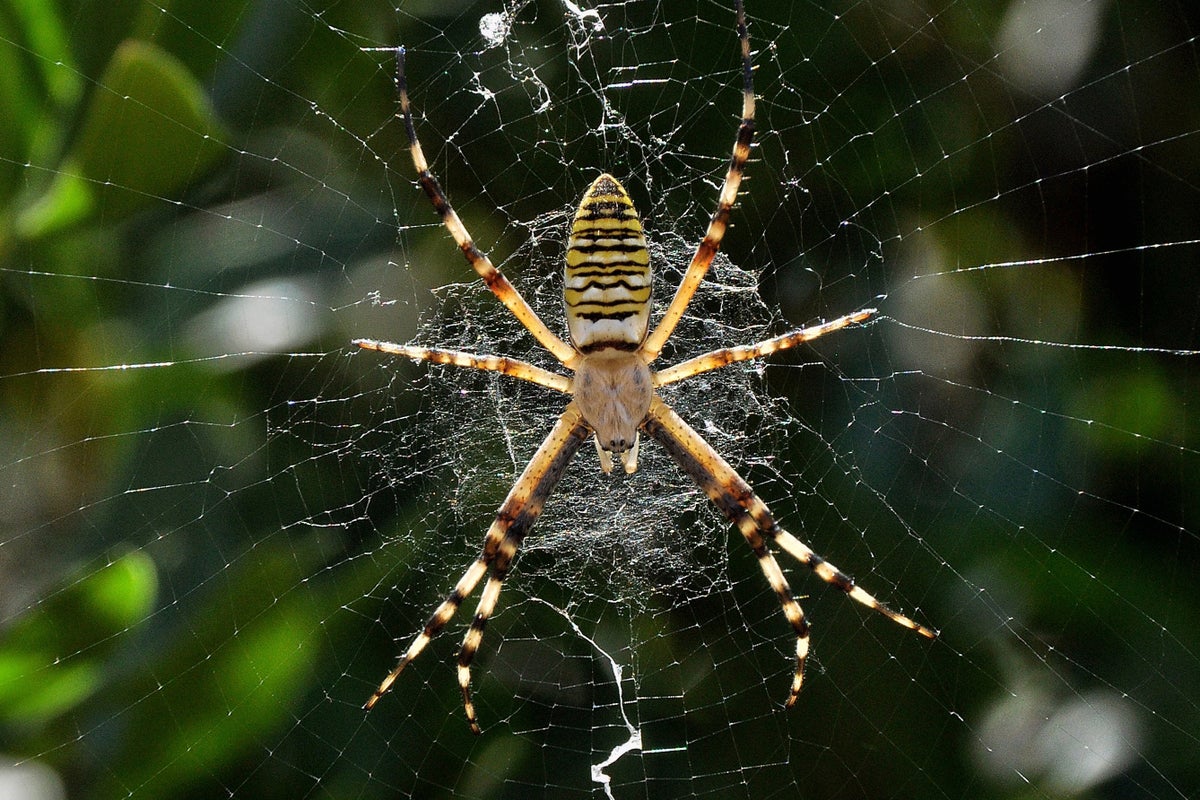Spooky Web Patterns May Help Spiders Sense Prey
Researchers simulated the effects that different web decorations had on vibrations, adding fresh insight to a decades-old debate about the function of these structures
Spiders such as this Argiope bruennichi sometimes adorn webs with zigzagging stabilimenta.
Join Our Community of Science Lovers!
Every year Halloween enthusiasts adorn their homes with synthetic cobwebs. But humans aren’t the only creatures who decorate their abodes.
Spiders bedeck their webs with “stabilimenta”—various woven patterns that are typically made of a different kind of silk than the rest of the web. In a new study published Wednesday researchers reported that they found that these “web decorations” may help the spiders detect certain vibrations that can help them find their prey.
If you’re enjoying this article, consider supporting our award-winning journalism by subscribing. By purchasing a subscription you are helping to ensure the future of impactful stories about the discoveries and ideas shaping our world today.
Scientists have also proposed that stabilimenta shield spiders from harsh ultraviolet rays, convey water for the arachnids to drink, or can either visually attract or repel prey. There is just one function that researchers widely agree on: stabilimenta help spiders of some species hide from predators. But “there are many different types of [web] geometries,” Greco says, “and this makes the possibilities of new functions available to spiders.”
A creature landing or moving on a spider web generates force. This force can become a vibration that travels through the silk that the spider can perceive. While reading old papers, Greco was unable to find any research into how stabilimenta shape those vibrations.
He and his colleagues chose to study Argiope bruennichi—a large spider that has yellow, black and white stripes and spins classic webs with spiral patterns—because the species is easy to find and one of the only spiders that produces stabilimenta in Italy, said Greco. He and his colleagues took images of six different types of stabilimenta in the forests of Sardinia over the course of two years.
There was the classic, or “normal,” stabilimentum—a dense, thick, zigzagging thread. Similarly, the “juvenile” stabilimentum that was produced by juvenile spiders zigzagged, but it was not as thick. The researchers called web decor that was woven on only one side from the center of the web “reduced.” “Drafted” stabilimenta appeared as incomplete or thin zigzags. And some webs had no stabilimenta at all. Lastly, the team categorized a “platform” stabilimentum: a thick and dense network of silk, woven in a symmetric pattern in the middle of the web.
Once these structures were photographed, the researchers created computer simulations to model how vibrations spread through the various webs. They tested the effect that different directions of impact had on each web.
In the simulations, the team first found that stabilimenta had no effect on waves from the force of an object landing perpendicular to the web or hitting it from the side toward the center. “Until here, I was happy because this is exactly what I expected,” Greco says.
Greco sees this study as a starting point to categorizing stabilimenta’s effects on vibration—and next he hopes to study such spooky effects in the wild.
If you enjoyed this article, I’d like to ask for your support. Scientific American has served as an advocate for science and industry for 180 years, and right now may be the most critical moment in that two-century history.
I’ve been a Scientific American subscriber since I was 12 years old, and it helped shape the way I look at the world. SciAm always educates and delights me, and inspires a sense of awe for our vast, beautiful universe. I hope it does that for you, too.
If you , you help ensure that our coverage is centered on meaningful research and discovery; that we have the resources to report on the decisions that threaten labs across the U.S.; and that we support both budding and working scientists at a time when the value of science itself too often goes unrecognized.
In return, you get essential news, captivating podcasts, brilliant infographics, , must-watch videos, challenging games, and the science world’s best writing and reporting. You can even gift someone a subscription.
There has never been a more important time for us to stand up and show why science matters. I hope you’ll support us in that mission.
Thank you,
David M. Ewalt, Editor in Chief, Scientific American
Source: www.scientificamerican.com
